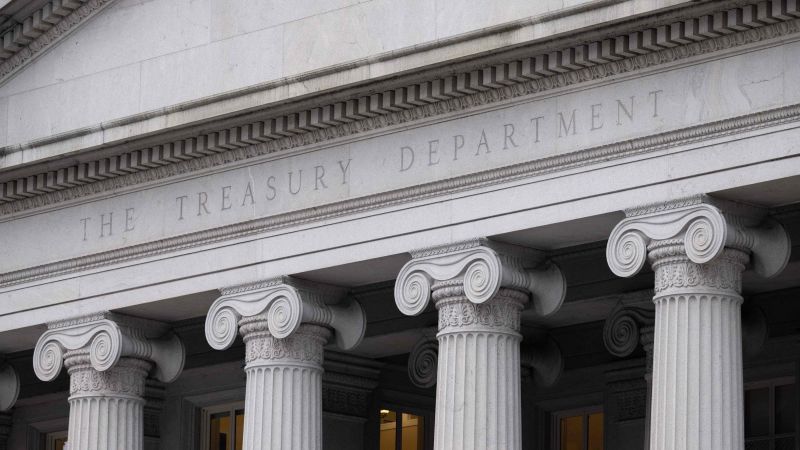As the date that the US could default on its obligations grows closer, the Treasury Department must prepare for an unprecedented situation – figuring out which bills to pay with the money it has on hand if Congress doesn’t act.
One option that Treasury officials have seriously contemplated in past debt ceiling dramas is prioritizing payments, which would entail satisfying certain bills before others. Among the highest priorities would be paying interest and principal on Treasury securities, according to a transcript of a Federal Reserve’s Federal Open Market Committee call during the 2011 debt ceiling crisis.
Treasury has never been forced to implement any contingency plans because lawmakers always addressed the borrowing cap in time. But the threat of default is now looming large – as soon as June 1 – while President Joe Biden and House Republicans remain far apart on a solution to the impasse. The president will meet with congressional leaders on Tuesday to try to find some common ground.
Some Republicans lawmakers are pushing payment prioritization as a way to minimize the fallout from a default, an option the party has supported in the past. But experts say it would be risky on many levels.
For one, it would not avoid the consequences of a default.
“Prioritization is effectively a default by just another name,” Treasury Secretary Janet Yellen told senators at a committee hearing in March. “It’s simply a recipe for economic and financial catastrophe to think we can pay some of our bills and not all of them.”
Even if the agency continued making timely interest and principal payments, rates on Treasury securities would rise, said Chris Campbell, chief policy strategist at Kroll, a financial services firm, and a former assistant Treasury secretary.
“It makes our debt much more expensive because no one’s going to want to buy it,” he said. “The confidence in our debt goes down.”
Still, it’s one of many options Treasury could be looking at in hopes of maintaining the safety and soundness of US securities, though no Treasury secretary would consider prioritization a responsible solution, he said.
Yellen told lawmakers that she cannot assure that the idea is feasible, adding there’s a reason why Treasury secretaries of both parties have rejected prioritization in the past.
“The government, on average, makes millions of payments each day, and our systems are built to pay all of our bills on time and not to pick and choose which bills to pay,” she said. “It would be an exceptionally risky, untested and radical departure from normal payment practices of agencies across the federal government.”
Among the monthly obligations:
– Social Security benefits are disbursed to about 66 million retirees, disabled workers and others on the third day of the month and on three Wednesdays each month. About $25 billion is sent each week.
– About $40 billion is paid to Medicare Advantage insurers and Medicare Part D prescription drug plans on the first day of the month.
– About $25 billion in pay or benefits for active-duty military members, civil service and military retirees, veterans and Supplemental Security Income recipients is disbursed on the first day of the month.
– Interest payments of varying amounts are made around the 15th and on the last day of each month.
It shouldn’t be up to Treasury which bills to pay when, said Wendy Edelberg, a senior fellow at the Brookings Institution.
“They don’t have that authority, and they shouldn’t have that authority,” she said. “Congress has the power of the purse.”
What’s more, if lawmakers fail to act and Treasury tries to implement a prioritization plan, it would likely spark swift legal action by those who aren’t first in line.
That would also put the agency in the sticky situation of having to justify why one group, such as investors, should be paid before another group, such as Social Security beneficiaries.
“In the extremely unlikely event that the Department of Treasury would do something different than paying the debt, the administration would be faced with the difficult decision of explaining to Americans and investors what payments are chosen to be made, when and why,” Campbell said.
Read the full article here
